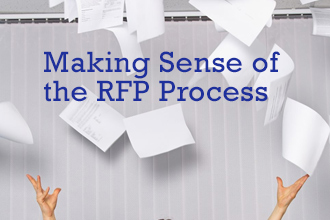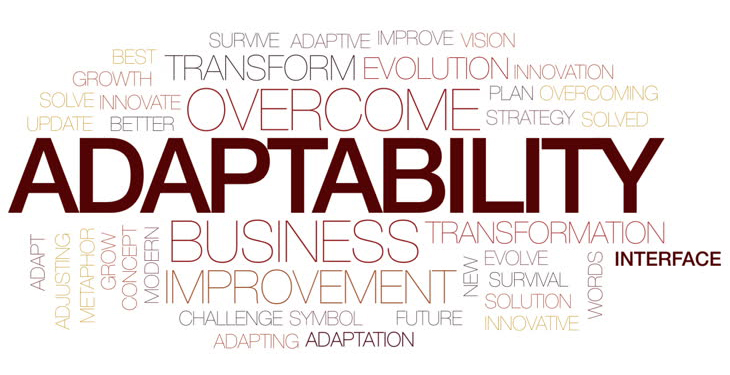Making Sense of the RFP Process
 By Chris Robinson
By Chris Robinson
Digital Strategy Director, Microgigantic
Goals
Why are you building the project? It may sound trite, but it is important to understand what you trying to accomplish. The first essential step is defining the business need. There are multiple facets to establishing such goals. It’s important that these are clearly articulated both from the perspective of the stakeholders and from the perspective of the guest. Such clarity will act as a filter for the problems the project seeks to solve, determine which factors may create obstacles to success, and establish key selection criteria when prioritizing solutions.
However, setting goals and objectives is just one step in the process. Before preparing an RFP it is also important to develop consensus on the project’s features and requirements, and then document the technology request in relation to the business goals.
There are just as many key steps involved in preparing and submitting an RFP. If these are missed red flags that will turn off any client include ambiguous responses as well as leaving questions unanswered. To have an RFP submission considered seriously, it is the vendor who is responsible for recognizing which RFP’s are unclear and to ask all those questions before submitting.
Why RFP?
The purpose of issuing a “Request for Proposal” is to standardize the process and provide a practice tool to make sure everyone is on equal footing. That means having the ability to compare ‘apples to apples’ and to get the best deliverable both for your needs and for the investment. When the process often falls short for digital signage it is because you are not drawing a direct comparison between tangibles like tables, chairs or hardware. Key elements in the digital world are not commodities. There are numerous factors to consider and assess. Physical or tangible procurements differ from digital-based procurements for many important reasons — the ‘unknowns’ and projects with moving parts.
Projects that incorporate such variables are becoming more and more frequent and they each represent a variety of potential decision-paths. These decisions may involve branding, content strategy, mobile interaction, location-based triggers, video storytelling and many other objectives. The decision process may also involve multiple stakeholders including marketing, sales, retail, online, guest experience, IT, HR and/or agency partners with varying goals.
You can see that it’s not just about procurement trying to drive the lowest cost, but instead, developing a consensus among multiple stakeholders who have their own objective and subjective goals and fashioning an ultimate deliverable that addresses each of them.
Sometimes when an RFP becomes vague or too ‘high level,’ it may indicate that the buyer does not know what to ask to include, or reflect that they may not be sufficiently familiar with both the requirements and alternative solutions. It is then of little help when in response there are providers using a cookie cutter approach to get through multiple RFP’s and only provide vanilla responses that don’t address the buyer’s needs, or provide any compelling differentiated insight in their response. This is where and when a third party, generally a consultant, will provide value to help close that loop.
RFP responses may require anywhere between ten to 80 man hours — or more — in preparation. The time, and therefore the cost of preparation can add up quickly, which is why vendors are selective about what they respond to, and why some use ‘boilerplate’ to expedite their responses.
Preparing an RFP is like preparing a resume or branding your organization. It is important to write something that will entice qualified vendors to respond and respond thoughtfully. RFP’s should be clearly written to encourage a good vendor match and vendor responses should be tailored to the uniqueness of a clients’ situation.
Include Time for Testing — Take an Agile Approach
Consultants can be retained to hone the RFP so that the document clearly articulates the requirements and specifications, allowing providers the opportunity to make appropriate and competitive bids, which means the successful bidder will be able to develop the solution based on those requirements.
If the client is unclear on the solution, but wants to evaluate the customer experience on one or more proposed solutions, this fact should be included in the RFP. Such an assessment may result in a choice of solutions providing an agile approach to development.
In addition, prototyping (concepting/spending time on scope) will improve speed to market, while saving investment in design, development and rework.
Customer First
Many RFP’s miss the point that the process is not entirely about the technology. Rather, it is about supplying a solution that considers the customer or the viewer of the content.
Content and context matter. When preparing an RFP, remember that the technology is the vehicle to deliver, engage and guide the customer during their journey and purchase experience.
Power of Content – User Experience – Customer First Approach
Not only should the focus be on engaging the consumer/guest/visitor, but also consider that every venue, every physical location is different and has different requirements.
When preparing an RFP, plan for prototyping to ensure the scope of physical requirements, challenges and limitations are fully understood. Often this is where mistake are made in committing to an RFP before understanding what the needs of the customers, the physical requirements and how the system is likely to evolve. Different answers to these questions almost always result in the need for an entirely different solution and provider(s).
Make no mistake about it. RFP’s are an investment in time and money. An investment in digital signage represents a significant capital investment. While the cost of prototyping or running pilot tests may seem high upfront, in the long-term, establishing clearly stated goals, understanding the user experience and budgeting appropriately for content as well as an appropriate delivery system will provide insight into what is actually needed and how it will evolve over time.
At the core of any system is content. This will differentiate the system and define the engagement. Essentially, it allows the system to come to life. Understanding the target audience, level of engagement, and what you want them to do, will ultimately determine if your system is a success. How you wish to engage and communicate this clearly in the scope of work within the RFP will help providers respond with solutions and capabilities tailored to your needs.
“You can use a eraser on the drawing table or a sledgehammer on a construction site.” — Frank Lloyd Wright.
Time spent upfront understanding the space, customer engagement, content strategy, will pay dividends in delivering a clearer RFP. Time should be spent prototyping and evaluating the concept. This doesn’t necessarily mean only prototyping through hardware and software. This means also applying market research methods to the target guest and out-of-home environment. Then content can be prototype and presented to determine of the concept will lead to the client’s goals. Understand and test before you invest.
Key Points
Often end users will select a vendor before they understand what they want to achieve, what flexibility they need in the system now and in the future, and how that will impact the system and the customer experience as time goes on.
That’s why it is important to commit to and build testing in to the budget in order to understand the needs of the system and the needs of the viewer. This should be part of the planning and RFP process. The less clear the needs for the system are initially, the more an RFI is needed to help establish those goals, as well as beta testing and pilot programs to test those hypotheses.
Typically RFP’s are done when there is a clear understanding of the scope, requirements and customer/viewer needs. However, sometimes/more often, they are done…
- Even when there is not a clear initial understanding
- By the procurement department
- Because it is the only system in place to generate an evaluation
Some organization’s request RFP’s when there is a clear understanding of the work to be done, but feel that the providers, or scope of work can easily changed — as though it were a commodity.
- This works for some products and services, but it doesn’t always apply to a digital signage solution.
- Why? Because evaluation is necessary to understand what type of solution is needed. If the vendors are seen as interchangeable the decision is likely based on price, not professional expertise or service.
Author Chris Robinson, Digital Strategy Director, Microgigantic, will be presenting Seminar 22 entitled, “How to Navigate a Successful RFI/RFP Process…In 100 Steps or Less,” Thurs., Feb. 13 — 4:00-5:00pm at Digital Signage Expo 2014 at the Sands Expo & Convention Center in Las Vegas. DSE will run Tues., Feb. 11th through Thurs., Feb. 13th. For more information about DSE or to register to attend any of the educational programs seminar and learn about digital signage, go to www.dse2014.com.
Chris is a digital strategy director for Microgigantic and founder of MyTribe LLC, a brand and digital consultancy. He has over 15 years experience in strategic marketing and BTB/BTC initiatives. Significant experience in engagement strategy, product marketing, cross-channel, strategy and general management including solid P&L experience. Clients include Target, Lands’ End, Dell, Delta Airlines, Shure, Guitar Center and Ernie Ball. Specialties: Strategy, Creative Technologist, Marketing, Mobile, Social Media, Digital Interactive, IT, Digital Strategy, eCommerce, Product Management, Multichannel Retail, Supply Chain and Logistics, Software and Web Application Development.





